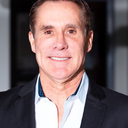Chin Liposuction Candidacy, Surgeon Qualifications, and Seamless Results? (Photo)
I’m considering chin liposuction and would like to know if I’m a suitable candidate for the procedure. Additionally, what qualifications should I consider when evaluating potential surgeons for this surgery? My concerns also extend to scarring, healing time, and achieving a natural, seamless result. Can you provide insights on these aspects, along with discussing any potential risks and offering post-operative care recommendations?

